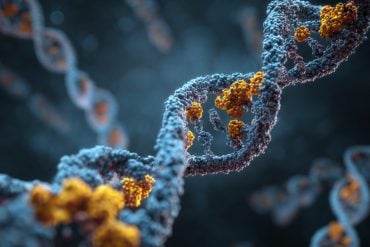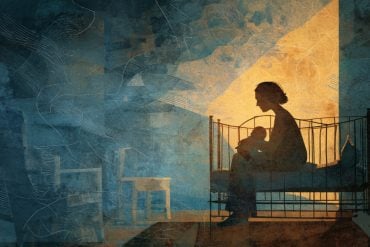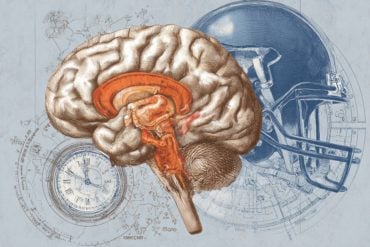An international team of researchers have identified a previously unknown neurodegenerative disorder and discovered it is caused by a single mutation in one individual born during the height of the Ottoman Empire in Turkey about 16 generations ago.
The genetic cause of the rare disorder was discovered during a massive analysis of the individual genomes of thousands of Turkish children suffering from neurological disorders.
“The more we learn about basic mechanisms behind rare forms of neuro-degeneration, the more novel insights we can gain into more common diseases such as Alzheimer’s or Lou Gehrig’s Disease,” said Murat Gunel, the Nixdorff-German Professor of Neurosurgery, and professor of genetics and neurobiology at Yale.
Gunel is a senior co-author of one of two papers published in the April 24 issue of the journal Cell that document the devastating effects of a mutation in the CLP1 gene. Gunel and colleagues at Yale Center for Mendelian Genomics along with Joseph Gleeson’s group at University of California-San Diego compared DNA sequencing results of more than 2,000 children from different families with neurodevelopmental disorders. In four apparently unrelated families, they identified the exact same mutation in the CLP1 gene. Working with the Frank Bass group from the Netherlands, the researchers also studied how CLP1 mutations interfered with the transfer of information encoded within genes to cells’ protein-making machinery.

The discovery of the identical mutation in seemingly unrelated families originally from eastern Turkey suggested an ancestral mutation, dating back several generations, noted the researchers.
Affected children suffer from intellectual disability, seizures, and delayed or absent mental and motor development, and their imaging studies show atrophy affecting the cerebral cortex, cerebellum, and the brain stem.
The second Cell paper by researchers from Baylor School of Medicine and Austria also found the identical founder mutation in CLP1 in another 11 children from an additional five families originally from eastern Turkey.
Gunel said that the high prevalence of consanguineous marriages [between closely related people] in Turkey and the Middle East leads to these rare recessive genetic neurodegenerative disorders. Affected children inherit mutations in the same gene from both of their parents, who are closely related to each other, such as first cousins. Without consanguinity between parents, children are very unlikely to inherit two mutations in the same gene.
“By dissecting the genetic basis of these neurodevelopmental disorders, we are gaining fundamental insight into basic physiological mechanisms important for human brain development and function” Gunel said. “We learn a lot about normal biology by studying what happens when things go wrong.”
Notes about this genetics research
Funding for the Gunel study was provided by National Human Genome Research Institute and the Gregory M. Kiez and Mehmet Kutman Foundation.
Contact: Bill Hathaway – Yale
Source: Yale press release
Image Source: The image is adapted from the Yale press release
Original Research: Abstract for “CLP1 Founder Mutation Links tRNA Splicing and Maturation to Cerebellar Development and Neurodegeneration” by Ashleigh E. Schaffer, Veerle R.C. Eggens, Ahmet Okay Caglayan, Miriam S. Reuter, Eric Scott, Nicole G. Coufal, Jennifer L. Silhavy, Yuanchao Xue, Hulya Kayserili, Katsuhito Yasuno, Rasim Ozgur Rosti, Mostafa Abdellateef, Caner Caglar, Paul R. Kasher, J. Leonie Cazemier, Marian A. Weterman, Vincent Cantagrel, Na Cai, Christiane Zweier, Umut Altunoglu, N. Bilge Satkin, Fesih Aktar, Beyhan Tuysuz, Cengiz Yalcinkaya, Huseyin Caksen, Kaya Bilguvar, Xiang-Dong Fu, Christopher R. Trotta, Stacey Gabriel, André Reis, Murat Gunel14, Frank Baas, and Joseph G. Gleeson in Cell. Published online April 24 2014 doi:10.1016/j.cell.2014.03.049
Abstract for “Human CLP1 Mutations Alter tRNA Biogenesis, Affecting Both Peripheral and Central Nervous System Function” by Ender Karaca, Stefan Weitzer, Davut Pehlivan, Hiroshi Shiraishi, Tasos Gogakos, Toshikatsu Hanada, Shalini N. Jhangiani, Wojciech Wiszniewski, Marjorie Withers, Ian M. Campbell, Serkan Erdin, Sedat Isikay, Luis M. Franco, Claudia Gonzaga-Jauregui, Tomasz Gambin, Violet Gelowani, Jill V. Hunter, Gozde Yesil, Erkan Koparir, Sarenur Yilmaz, Miguel Brown, Daniel Briskin, Markus Hafner, Pavel Morozov, Thalia A. Farazi, Christian Bernreuther, Markus Glatzel, Siegfried Trattnig, Joachim Friske, Claudia Kronnerwetter, Matthew N. Bainbridge, Alper Gezdirici, Mehmet Seven, Donna M. Muzny, Eric Boerwinkle, Mustafa Ozen, Baylor Hopkins Center for Mendelian Genomics, Tim Clausen, Thomas Tuschl, Adnan Yuksel, Andreas Hess, Richard A. Gibbs, Javier Martinez, Josef M. Penninger, and James R. Lupski in Cell. Published online April 24 2014 doi:10.1016/j.cell.2014.02.058






